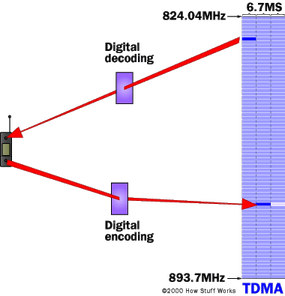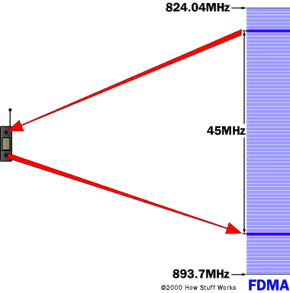Cell Phone Network Technologies: 2G
Cell phone networks fall into three categories: 2G, 3G and 4G. In 2G networks, there are three common technologies used for transmitting information:
- Frequency division multiple access (FDMA)
- Time division multiple access (TDMA)
- Code division multiple access (CDMA)
Although these technologies sound very intimidating, you can get a good sense of how they work just by breaking down the title of each one.
Advertisement
The first word tells you what the access method is. The second word, "division," lets you know that it splits calls based on that access method.
- FDMA puts each call on a separate frequency.
- TDMA assigns each call a certain portion of time on a designated frequency.
- CDMA gives a unique code to each call and spreads it over the available frequencies.
The last part of each name is "multiple access." This simply means that more than one user can use each cell.
FDMA separates the spectrum into distinct voice channels by splitting it into uniform chunks of bandwidth. To better understand FDMA, think of radio stations: Each station sends its signal at a different frequency within the available band. FDMA is used mainly for analog transmission. While it is certainly capable of carrying digital information, FDMA is not considered to be an efficient method for digital transmission.
TDMA is the access method used by the Electronics Industry Alliance and the Telecommunications Industry Association for Interim Standard 54 (IS-54) and Interim Standard 136 (IS-136). Using TDMA, a narrow band that is 30 kHz wide and 6.7 milliseconds long is split time-wise into three time slots.
Narrow band means "channels" in the traditional sense. Each conversation gets the radio for one-third of the time. This is possible because voice data that has been converted to digital information is compressed so that it takes up significantly less transmission space. Therefore, TDMA has three times the capacity of an analog system using the same number of channels. TDMA systems operate in either the 800-MHz (IS-54) or 1900-MHz (IS-136) frequency bands.

